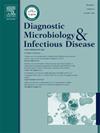推进乙型肝炎消除:全球免疫进展和未来方向的系统回顾。
IF 2.1
4区 医学
Q3 INFECTIOUS DISEASES
Diagnostic microbiology and infectious disease
Pub Date : 2024-12-19
DOI:10.1016/j.diagmicrobio.2024.116666
引用次数: 0
摘要
世界卫生组织(世卫组织)制定了到2030年消除病毒性乙型和丙型肝炎的目标。乙型肝炎(HepB)疫苗接种仍然是控制和消除乙型肝炎病毒(HBV)感染的最有效策略。乙型肝炎疫苗的开发始于血浆源性疫苗,此后已被更安全、更有效的重组疫苗所取代,重组疫苗现在被认为是预防乙型肝炎病毒感染的金标准。最近,基于mrna的疫苗已经成为一个有前途的平台。本研究旨在回顾并提供17种乙肝疫苗的特征、功效、有效性和相关变异影响的最新比较分析。报告还强调了乙型肝炎疫苗接种的全球进展,191个国家在全国范围内实施了乙型肝炎疫苗接种,预计到2022年5岁以下儿童的乙型肝炎患病率为0.7%。这一成就是由目前疫苗的强安全性、高免疫原性和强大功效所推动的,这些疫苗已证明副作用很小。然而,在某些对疫苗接种反应不充分的人群中,挑战仍然存在。在这里,我们报告了最新的指南,并提出了提高HepB疫苗接种对这些特定人群有效性的策略。本文章由计算机程序翻译,如有差异,请以英文原文为准。
Advancing hepatitis B elimination: A systematic review of global immunization progress and future directions
The World Health Organization (WHO) has set a target of eliminating viral hepatitis B and C by 2030. Vaccination against hepatitis B (HepB) remains the most effective strategy for controlling and eliminating Hepatitis B Virus (HBV) infection. The development of HepB vaccines started with plasma-derived vaccines, which have since been largely replaced by safer and more effective recombinant vaccines, now considered the gold standard for preventing HBV infections. More recently, mRNA-based vaccines have emerged as a promising platform. This study aims to review and provide an up-to-date comparative analysis of the characteristics, efficacy, effectiveness, and the impact of variants of concern across 17 HepB vaccines. It also highlights the global progress of HepB vaccination, with 191 implementing HepB vaccination for the entire country, and an estimated HBV prevalence of 0.7 % among children under 5 years in 2022. This achievement is driven by the strong safety profiles, high immunogenicity, and robust efficacy of current vaccines, which have demonstrated minimal side effects. Nevertheless, challenges persist in certain populations that do not respond adequately to vaccination. Here, we report the updated guidelines and propose strategies to improve the effectiveness of HepB vaccination for these specific populations.
求助全文
通过发布文献求助,成功后即可免费获取论文全文。
去求助
来源期刊
CiteScore
5.30
自引率
3.40%
发文量
149
审稿时长
56 days
期刊介绍:
Diagnostic Microbiology and Infectious Disease keeps you informed of the latest developments in clinical microbiology and the diagnosis and treatment of infectious diseases. Packed with rigorously peer-reviewed articles and studies in bacteriology, immunology, immunoserology, infectious diseases, mycology, parasitology, and virology, the journal examines new procedures, unusual cases, controversial issues, and important new literature. Diagnostic Microbiology and Infectious Disease distinguished independent editorial board, consisting of experts from many medical specialties, ensures you extensive and authoritative coverage.

 求助内容:
求助内容: 应助结果提醒方式:
应助结果提醒方式:


